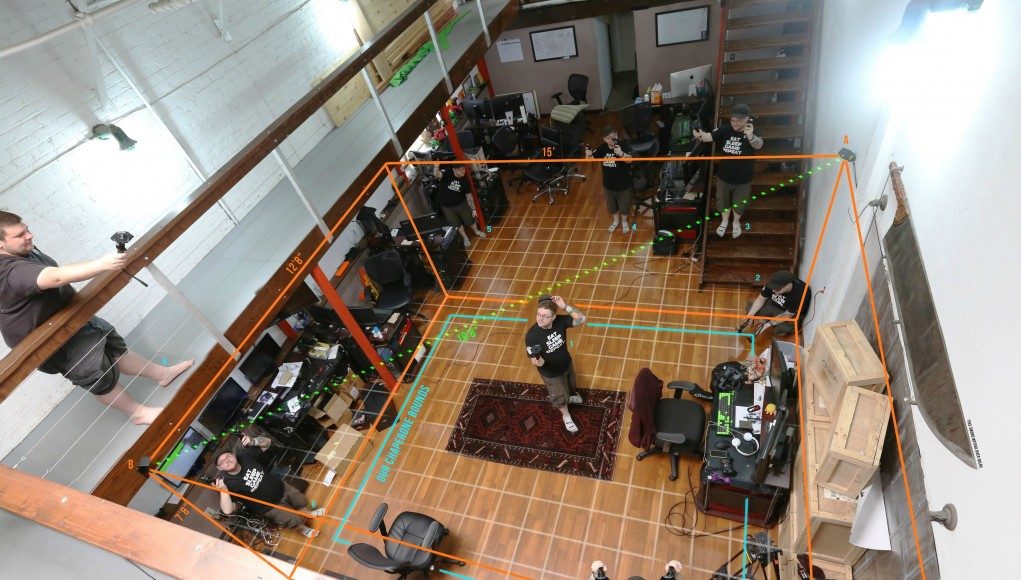SFX house Stress Level Zero recently received their Valve Vive Developer Edition kit and have now published a useful image demonstrating just what Valve’s 15×15 feet ‘room scale’ tracking looks like when applied in reality.
Valve and HTC’s Vive virtual reality systems are shipping in developer kit form right now with many already in receipt of their boxes of magic and wonder. But how does the system’s Lighthouse work in a real life setting? Stress Level Zero are here to help answer that with this informative illustration of their setup, roughly approximating the theoretical boundaries set our by Valve themselves.
One thing to note, the defined boundaries for Vive’s ‘Chaparone’ system, which kicks in, displaying an overlaid grid of your real world boundaries should you approach them. As the system’s monicker suggests, to stop you making and arse of yourself crashing into your favourite furniture. Valve’s Lighthouse tracking system uses laser scanning base stations and photo receptive sensors on tracked objects to pinpoint their position in 3D space.
Valve have indicated that, although these Developer Edition systems have only been issues to selected code houses, the retail version isn’t far away, due to ship by the end of the year with unconfirmed reports it could be as soon as November.







